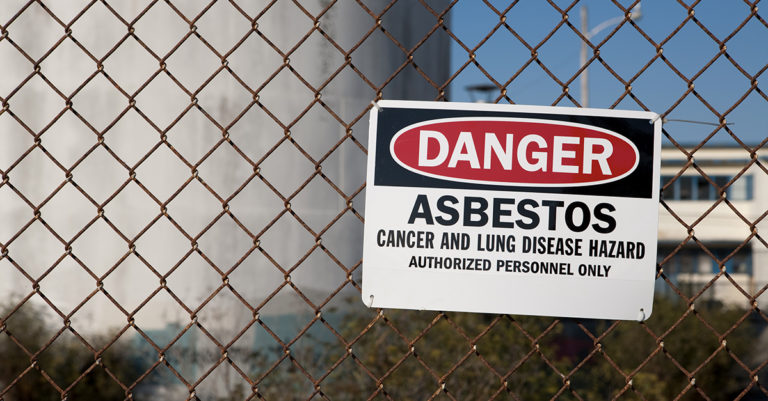An estimated 15,000 people in the United States pass away from asbestos-related diseases each year.
Even though asbestos has been identified as a cause of cancer, at least 8 million pounds of raw asbestos and asbestos-containing materials have arrived in U.S. ports since 2006 (EWG Action Fund).
Learning more about asbestos and who is at risk of exposure can help lead to greater support for banning asbestos use in the United States altogether.
Who is at Risk of Asbestos Exposure?
More than 75 occupational groups have exposed employees to asbestos in the workplace. From construction workers and electricians, to auto mechanics and elementary school teachers, several occupations need to be aware of where they might come into contact with asbestos at work. Even worse, workers in asbestos occupations can take asbestos fibers home on their clothes, exposing their loved ones to the dangerous toxin at home. Here are the top at-risk occupations:
- Construction Workers
Prior to the 1980s, thousands of construction products contained asbestos. Asbestos-related diseases have a long latency period, so if you worked in construction before 1980, you may be at increased risk of developing an asbestos-related disease. Some roofing and flooring materials are still made with asbestos, so current construction workers are also at risk of exposure.
- Firefighters
Many homes built before the 1980s contained asbestos. Fires damaging asbestos products in these homes cause asbestos fibers to become airborne, exposing any firefighters on the scene. Asbestos was also used in the past to make fire protective gear, including helmets and boots.
- Industrial Workers
Industrial workers, including mechanics, trade laborers, machinery operators, and especially insulators are at an increased risk of asbestos exposure. Whether they were operating machines that contained asbestos, or creating asbestos products themselves, asbestos exposure could have occurred in a variety of ways for these workers.
- Power Plant Workers
Power plant workers are at an increased risk of asbestos exposure because many heat-resistant products in their industry, such as fireproofing spray and pipe insulation contained asbestos.
- Shipyard Workers
Approximately 30 percent of mesothelioma lawsuits are filed by veterans who worked on naval ships or in naval shipyards. Boiler workers and ship repairmen were at highest risk for asbestos exposure.
- Elementary School Teachers
The 2007 National Institute for Occupational Safety and Health’s “Work-Related Lung Disease Surveillance Report” noted that elementary school teachers have an extremely high risk of being diagnosed with an asbestos-related disease – more than twice as likely than Americans as a whole (National Institute for Occupational Safety and Health).
Explore the Asbestos Exposure section of our website for more information on a number of asbestos companies, occupations and products.
How Can I Learn More and Protect Myself from Asbestos Exposure?
Read Simmons Hanly Conroy’s Asbestos Facts sheet. Our fact sheet will provide you with valuable information to educate not only yourself, but also your friends and family on the dangers of asbestos.
From the Asbestos Facts sheet, you will learn
- Hazards of asbestos
- Uses of asbestos in history
- How asbestos exposure happens
- More about who is at risk of asbestos exposure
- Diseases linked to asbestos exposure




